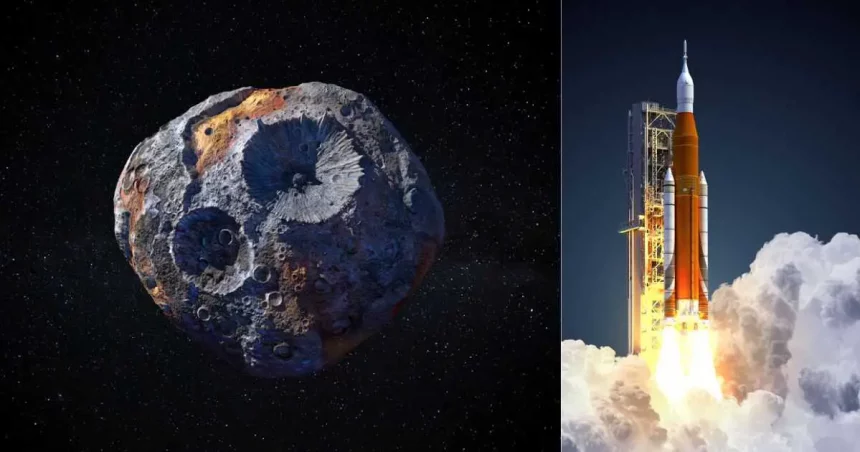NASA’s groundbreaking mission to the asteroid known as 16 Psyche marks an exciting milestone in space exploration. Unlike traditional missions focused solely on scientific discovery, this mission is unique due to its target—a metallic asteroid with an estimated value that is truly staggering. Experts believe that 16 Psyche contains metals so valuable that their total worth could reach the quintillion-dollar mark, igniting visions of unimaginable wealth.
This mission not only pushes the boundaries of human technological achievement but also delves into the economic implications of space resources. The idea that an asteroid could potentially make every person on Earth a billionaire captures public interest and raises questions about how it could impact the global economy. As NASA prepares for this ambitious journey, the world eagerly anticipates the profound effects this celestial giant could have in space and back on Earth.
NASA launched the mission to 16 Psyche with clear objectives aimed at unraveling the mysteries of the solar system’s formation. The spacecraft, specially designed for this deep space excursion, embarked on a journey spanning billions of miles to reach the asteroid situated between Mars and Jupiter.
The primary goal of this mission is scientific exploration and understanding. NASA seeks to study the asteroid’s composition, rich in metals like gold, iron, and nickel, to gain insights into the violent collisions and accretion processes that shaped the planets. By studying 16 Psyche, scientists hope to peer into the core of an early planet, offering a glimpse into what lies beneath Earth’s rocky mantle.
NASA selected 16 Psyche for its unique metallic composition and as a rare opportunity to study a remnant of planetary differentiation. This asteroid likely survived from early solar system history, providing insights into processes obscured by billions of years of geological activity on planets like Earth. The mission to 16 Psyche has the potential to reshape our understanding of planetary cores and their evolution, offering a unique perspective on a part of Earth inaccessible through traditional excavation.
While the economic potential of 16 Psyche is immense, with metals such as iron, nickel, and traces of gold contributing to its astronomical estimated worth, the practical implications of extracting these resources back to Earth raise complex economic questions. The introduction of such vast quantities of these metals could lead to oversupply, driving market prices down and potentially destabilizing industries reliant on their scarcity for value.
The technical challenges faced in reaching 16 Psyche have spurred NASA to innovate spacecraft design and mission planning. Overcoming obstacles such as vast distances, communication delays, and the harsh space environment has led to advancements in propulsion systems, autonomous navigation, scientific instruments, and shielding technology. These innovations not only enhance our understanding of 16 Psyche but also pave the way for future missions to explore distant celestial bodies.
As the mission to 16 Psyche showcases the potential for space mining and unlocking untold wealth, it also highlights the need for careful consideration of the economic impacts of extracting resources from celestial bodies. Balancing technological progress with economic stability will be crucial as we navigate the future of space exploration and resource utilization.






